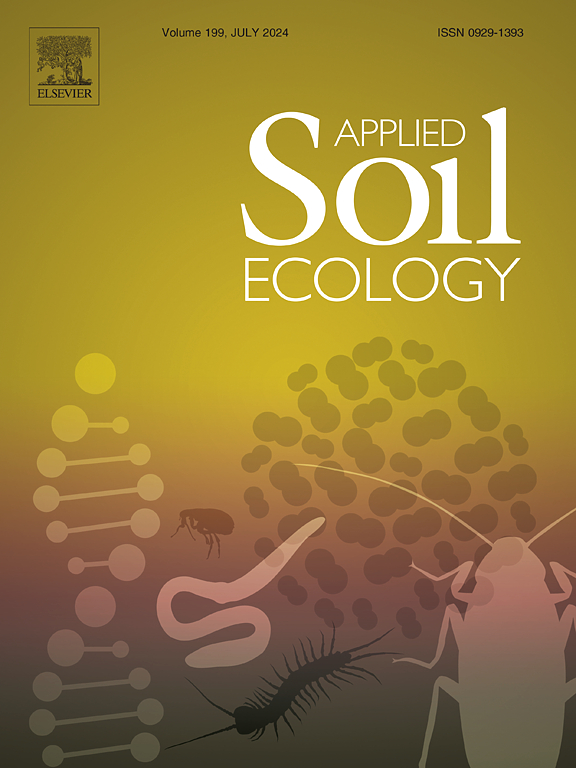Spatial dynamics of soil algae: Insights into abundance, community structure, and ecological roles in mixed biocrusts across China
IF 4.8
2区 农林科学
Q1 SOIL SCIENCE
引用次数: 0
Abstract
Soil algae, encompassing cyanobacteria and eukaryotic microalgae, along with heterotrophic microorganisms, are vital components of the surface soil microbiome. They play a key role in maintaining soil ecosystem balance, enhancing soil health, and supporting ecological restoration. Despite their significance in terrestrial ecosystems, our understanding of soil algal distribution on a continental scale remains limited. In this study, we collected soil algae from mixed crusts in 57 regions across China to investigate their distribution patterns, identify key influencing factors, and assess their impact on soil ecosystem functions using high-throughput sequencing technology and qPCR. Our findings showed that soil cyanobacteria were more abundant than eukaryotic microalgae at all sample sites, with a relative abundance ranging from 77.85 % to 99.99 %. Interestingly, the Shannon diversity of cyanobacteria, green algae, and diatoms decreased from south to north, while their abundance (based on qPCR) increased in the same direction. All types of algal communities exhibited significant distance-decay relationships; however, the estimated distance-decay slopes varied among different algal types. Canonical principal coordinate analysis revealed significant differences in the community composition of soil cyanobacteria and green algae across climatic zones, accounting for 10.9 % and 11.8 % of the variation, respectively. Random forest analysis indicated that climatic factors (including MAT and MAP) are the main predictors of soil algal diversity, while edaphic factors (soil pH, VP, TP, and TN) influence their abundance. Moreover, variance partitioning analysis suggested that purely environmental factors explained more variation than dispersal limitation in soil algal communities. Structural equation modeling indicated a significant positive correlation between the diversity and abundance of cyanobacteria, green algae, and diatoms, and ecosystem multifunctionality, with both biotic and abiotic factors accounting for 17 % to 24 % of the variation in soil multifunctionality. Overall, our study highlights the biogeographical characteristics of soil algae and their roles in soil ecosystem functions. Future research should further explore the presence and functions of soil algae in different soil ecosystems.

求助全文
约1分钟内获得全文
求助全文
来源期刊

Applied Soil Ecology
农林科学-土壤科学
CiteScore
9.70
自引率
4.20%
发文量
363
审稿时长
5.3 months
期刊介绍:
Applied Soil Ecology addresses the role of soil organisms and their interactions in relation to: sustainability and productivity, nutrient cycling and other soil processes, the maintenance of soil functions, the impact of human activities on soil ecosystems and bio(techno)logical control of soil-inhabiting pests, diseases and weeds.
 求助内容:
求助内容: 应助结果提醒方式:
应助结果提醒方式:


